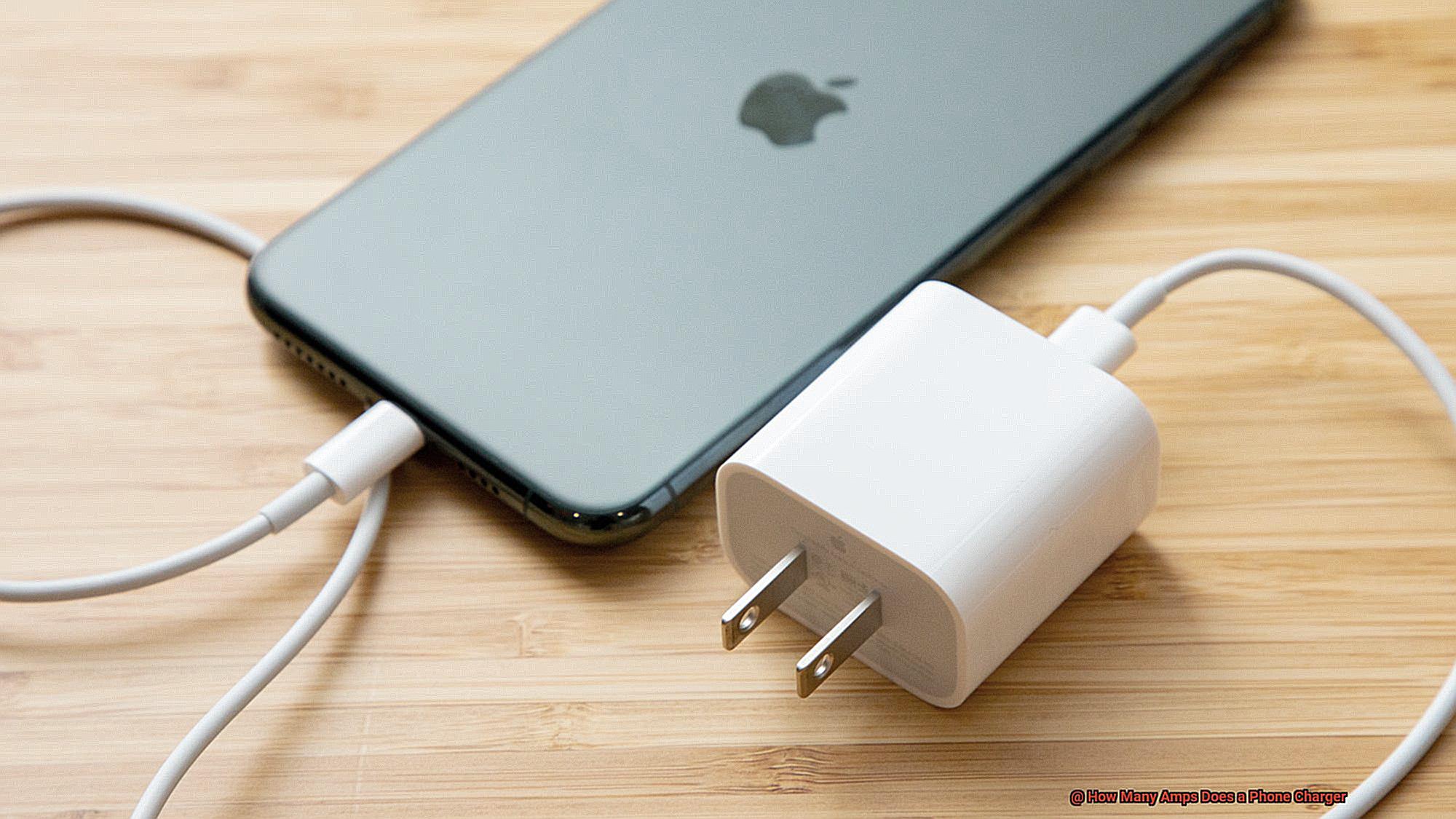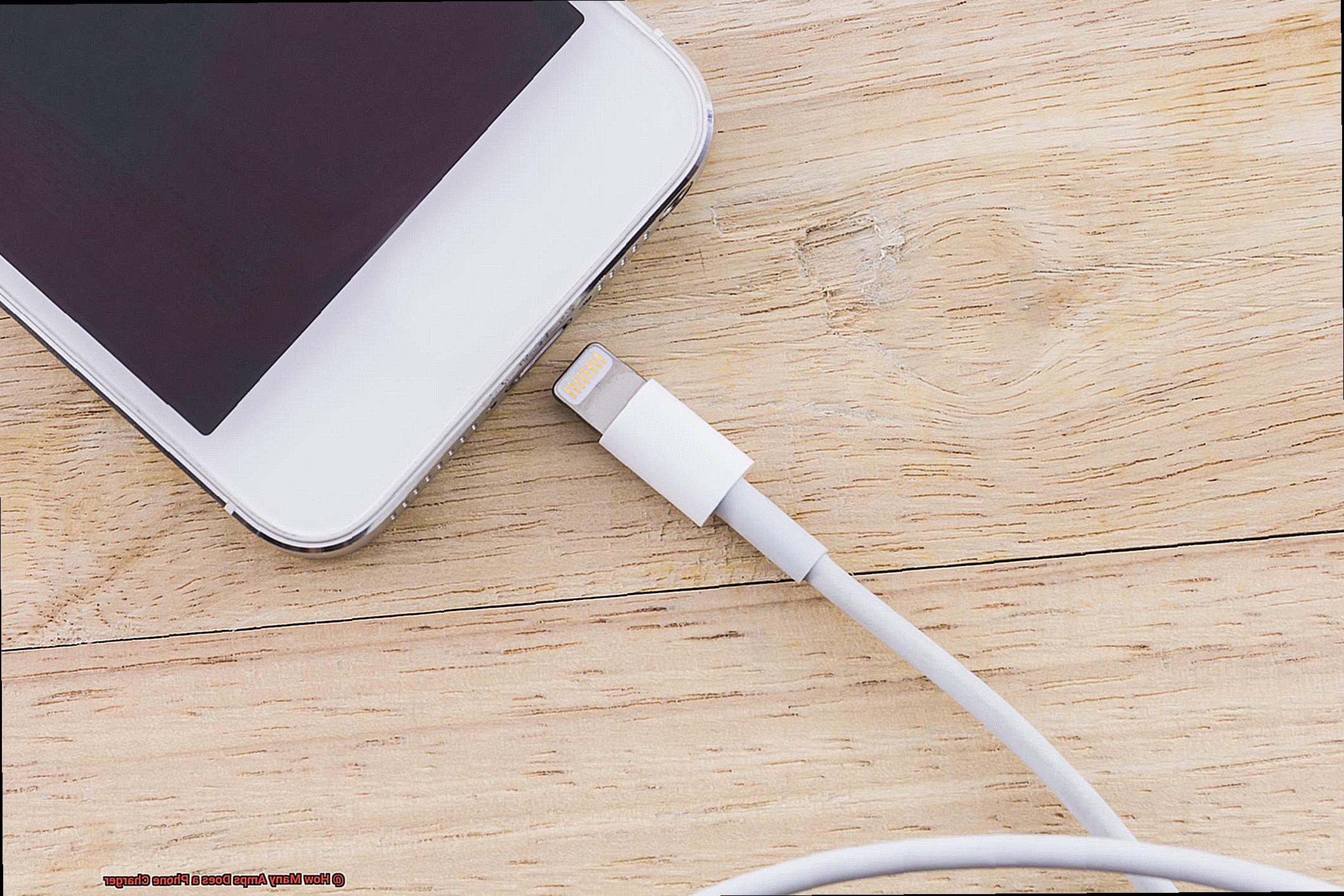Do you find yourself twiddling your thumbs as your phone takes forever to charge? Or maybe you’re perplexed by how quickly your battery drains. It’s time to investigate the culprit behind these woes – your phone charger.
The number of amps a phone charger provides can significantly impact the charging speed and battery life of your device. Yet, many people overlook this crucial detail when selecting a charger.
If you’re unsure about how many amps your phone charger should have, don’t worry; you’re not alone. The answer to this question is often overlooked, but it makes a massive difference in the performance of your phone.
Phone chargers can range from 0.5 to 2.4 amps, with most modern chargers supplying around 1.5 amps. However, keep in mind that the charging speed also depends on factors such as the type of phone and its battery capacity.
It’s essential to note that using a charger with fewer amps than required can result in slower charging times and even damage to your phone. Conversely, using a charger with higher amps than necessary won’t necessarily charge your phone faster and could lead to overheating or other issues.
So next time you’re shopping for a new phone charger or wondering why your current one isn’t performing as expected, remember to check the amp rating and choose appropriately for your device. Your patience (and phone) will thank you.
What is an Amp?
Contents
An amp, short for ampere, is a unit of measurement for electric current. It measures the amount of electric charge that passes through a circuit in one second. In other words, it’s like counting the number of water droplets flowing through a pipe.
Electric current refers to the flow of electric charge through a conductive material, such as a wire. Just like water flows from high pressure to low pressure, electric charge flows from areas of high voltage to areas of low voltage. One ampere (1A) of current is equal to the flow of one coulomb of electric charge per second. A coulomb is a measure of electric charge and refers to the amount of charge that flows through a circuit when an electric current of one ampere flows for one second.
Wondering how this applies to your phone charger? Well, it’s crucial to know how many amps your charger can provide. Most phone chargers offer between 1-2 amps, but newer fast chargers can reach up to 4 amps. The more amps a charger provides, the faster your phone will charge. But beware. While using a higher amperage charger can charge your phone quickly, it may generate more heat which can be damaging to your battery.
That being said, it’s important to use the charger that came with your phone or one that is specifically designed for your phone’s make and model. Using a charger with too high or too low voltage can damage your phone’s battery or cause other issues. To determine how many amps your phone charger provides, check the label on the charger itself or refer to your phone’s manual.
Now that you know what an amp is and how it relates to electric current, you’re better equipped to make an informed decision when choosing your phone charger or any electronic device that requires electricity. So, next time you’re looking to charge your phone, remember to check the amperage rating and choose a charger that suits your needs.
How Many Amps Does a Phone Charger Provide?
Well, the answer could lie in the amperage, or amps, of your phone charger. Amps refer to the amount of current that flows from the charger to your device while charging. Think of it like counting the number of water droplets passing through a pipe. The higher the amps, the more droplets are flowing, and the faster your phone will charge.
Typically, phone chargers provide between 1 and 2 amps of current. However, with newer models, you may see chargers providing up to 3 amps or more. But don’t be fooled into thinking a higher amperage rating means faster charging times. Your device is designed to draw only a certain amount of current, even if a higher amperage charger is plugged in. So, using a charger with a higher amperage rating than your device requires won’t necessarily result in faster charging times.
On the other hand, using a lower amperage charger than your device requires can result in slower charging times.
So, it’s essential to find out how many amps your phone charger provides. You can check the label on the charger itself or look up the manufacturer’s specifications online.
By doing so, you can ensure optimal performance and safety for your device.
Checking the Label on Your Charger
The solution may not be a new phone, but rather a closer look at your charger. The secret to faster charging is all about the amps, and checking the label on your charger can help you determine the amperage required for optimal charging performance.
Think of amps as tiny electrical currents flowing through a pipe – the more amps, the faster your phone will charge. However, it’s important to note that a higher amperage rating doesn’t automatically mean faster charging times. Your device is designed to draw only a certain amount of current, so it’s essential to use a charger that provides the right amount of amps for your phone.
Thankfully, determining the amperage of your charger is quite simple. Just take a look at the label on the charger itself. The label will display the input and output voltage and amperage, with the output current or output amperage indicating the amount of electrical current that flows through the charger.
If you see a number followed by “mA,” don’t fret – it simply stands for milliamps, which are one-thousandth of an amp. Remember, different phones may require different amperages to charge effectively, so it’s crucial to use a charger that is compatible with your phone.
To ensure optimal charging performance and prevent potential damage from using an incompatible or low-quality charger, consider consulting your phone’s user manual or manufacturer’s website for recommended chargers and amperages.
Measuring Amperage with a Multimeter
Well, the answer to your problem might be as easy as measuring the amperage of your phone charger using a multimeter. A multimeter is like a superhero that can measure voltage, current, and resistance in an electrical circuit.
To begin, set the multimeter to measure current, typically denoted by the letter ‘A’ on the meter. Ensure that your phone charger is plugged into an outlet and connected to your phone. Turn off your phone and unplug the charger from it.
Next, set the multimeter to measure DC amps since most phone chargers operate on DC power. Now, this is where things get technical. You need to break open the circuit of the charger and connect the multimeter in between the two ends of the circuit. If you’re not comfortable with this task, don’t hesitate to consult with an electrician or someone experienced in this area.
Once you’ve successfully connected the multimeter in series with the charger, turn on your phone and let it charge for a few minutes. The multimeter will display a reading of amps, telling you how many amps your phone charger is outputting. Keep in mind that the amperage output may vary depending on your phone and charger, but most chargers output between 1 and 2 amps.
It is essential to note that measuring amperage with a multimeter can be dangerous if not done properly. Always follow proper electrical safety precautions and consult with a professional if you’re unsure about any aspect of the process.
By ensuring you’re using a compatible charger with the right amount of amps, you’ll be able to optimize charging performance and prevent potential damage from using an incompatible or low-quality charger.

Considerations for Voltage and Amperage
Well, the answer to this problem lies in understanding the importance of voltage and amperage when it comes to phone charging.
Think of voltage as the electrical potential that flows through a circuit, while amperage is the measure of electrical current that flows through the circuit. Just like a car engine requires a specific type of fuel, your phone requires a specific voltage and amperage to charge correctly.
Most phone chargers have an output voltage of 5 volts, which is the standard for USB charging devices. However, the amperage can vary depending on the charger’s design and intended use. It’s essential to note that using a charger with too high of an amperage can damage your phone’s battery.
The amperage of a phone charger determines how quickly it can charge your device. A charger with a higher amperage can charge your phone faster than a charger with a lower amperage. However, not all devices are created equal when it comes to charging. For instance, tablets require a higher amperage to charge quickly, while some older phones may only be able to handle charging at a lower amperage.
To ensure that you’re using the right charger for your device, it’s best to stick with the charger that came with your phone or tablet. If you need to purchase a new charger, make sure to check the specifications for your device and choose a charger with an appropriate voltage and amperage rating.
d6EZuY39K0A” >
Conclusion
To wrap things up, the number of amps your phone charger provides plays a vital role in how quickly and safely your device charges. Opting for a charger with too few or too many amps can lead to slower charging times, potential damage to your phone, or even overheating.
Typically, most phone chargers offer between 1 and 2 amps of current. However, newer models may provide up to 3 amps or more. It’s essential to use a charger that delivers the right amount of amps for your phone to ensure optimal performance and safety.
You can check the label on the charger itself or refer to your phone’s manual to determine how many amps it needs. It’s also crucial to consider voltage when selecting a phone charger. Most USB charging devices have an output voltage of 5 volts.
In summary, knowing how many amps and what voltage your phone charger provides is crucial for efficient and safe charging.





